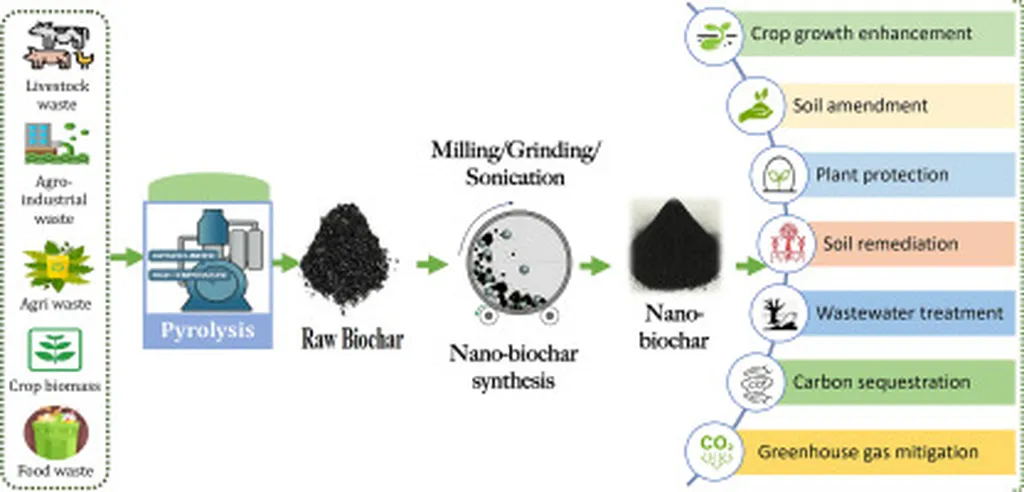In the quest for sustainable agricultural practices and environmental remediation, a new player has emerged from the shadows of agricultural waste: nanobiochar. Recent research published in the *Journal of Water and Environmental Nanotechnology* (translated as *Journal of Water and Environmental Nanotechnology*), led by Deshraj Singh Thakur from Govt. Auto. Girls P.G. Excellence College Sagar in India, sheds light on the transformative potential of this innovative material. Nanobiochar, a nano-sized version of traditional biochar, is derived from agricultural waste and is poised to revolutionize soil fertility and environmental sustainability.
Traditional biochar, a carbon-rich product obtained from the pyrolysis of organic materials, has long been recognized for its ability to improve soil health and sequester carbon. However, nanobiochar takes this a step further. “Nanobiochar exhibits superior performance due to its enhanced characteristics, such as a significantly larger surface area, increased porosity, superior adsorption capacity, and catalytic potential,” explains Thakur. These properties make nanobiochar a powerful tool for enhancing phytoremediation—the process by which plants remove contaminants from soil and water.
The commercial implications for the energy and agricultural sectors are substantial. Nanobiochar’s ability to optimize soil nutrient dynamics can lead to more efficient crop growth and higher agricultural productivity. This, in turn, can reduce the need for chemical fertilizers, lowering costs for farmers and decreasing the environmental footprint of agriculture. Moreover, its potential to adsorb heavy metals and reduce greenhouse gas emissions presents a promising avenue for environmental remediation and carbon sequestration.
However, the journey towards widespread adoption of nanobiochar is not without challenges. “The utilization of nanobiochar remains in its early stages,” Thakur cautions. “Systematic research is needed to address cost-effectiveness, safety, and scalability concerns.” Future research should focus on assessing the long-term impacts of nanobiochar on agricultural systems and the environment. Optimizing production processes, understanding soil interactions, and evaluating ecological impacts are crucial for sustainable deployment.
The potential of nanobiochar extends beyond agriculture and environmental remediation. Its ability to support waste upcycling and contribute to the transition towards a circular economy makes it a valuable asset in the fight against climate change and environmental degradation. As research progresses, nanobiochar could become a cornerstone of sustainable practices, shaping the future of agriculture and environmental management.
In the words of Thakur, “Nanobiochar holds significant potential to support waste upcycling, sustainable agriculture, and environmental restoration, contributing to the transition towards a circular economy and global sustainability objectives.” With continued research and development, nanobiochar could very well become a game-changer in the quest for a more sustainable future.

